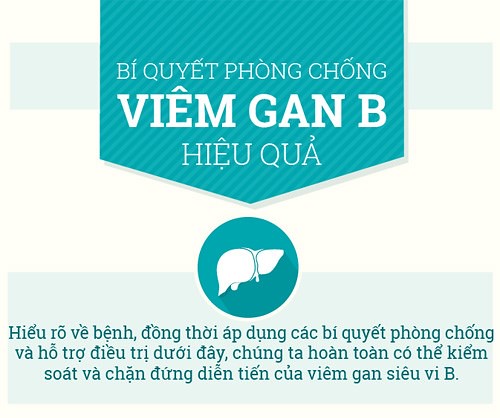On top of that, we observed that pharmacists made use of quite a few unique programs furthermore to CPRS, for example BCMA, Essentris, VistA, VistA Imaging, and utilized diverse nonEHR sources, like other papers, clinicians, whiteboards, and so on. Some information and facts was simpler to seek out than other folks, one example is, to be able to find the patient’s QTC interval (or perhaps if they had an ECG carried out) pharmacists had to log into VistA Imaging, which took seconds just to log in. Data Tasks There had been quite a few tasks that the pharmacists performed when preparing for rounds. Some of the most common had  been comparing LJH685 chemical information medication lists for medication reconciliation, correlating indicationstreatments and treatmentsindications, managingoptimizing drug therapy (including insulin or warfarin management), verifying medication administration, monitoring for ADEs, and documenting notes inside the EHR (such as medication reconciliation notes). Commonly, there was a considerable quantity of activity switching and multitasking, like checking for drugdrug
been comparing LJH685 chemical information medication lists for medication reconciliation, correlating indicationstreatments and treatmentsindications, managingoptimizing drug therapy (including insulin or warfarin management), verifying medication administration, monitoring for ADEs, and documenting notes inside the EHR (such as medication reconciliation notes). Commonly, there was a considerable quantity of activity switching and multitasking, like checking for drugdrug  interactions, drug doses, medication indications, modifications in therapy, and so forth. when reading the medication list. Within this paper, we present managing insulin doses and verifying medication administration as examples of tasks the pharmacists PubMed ID:https://www.ncbi.nlm.nih.gov/pubmed/24886176 performed inside the EHR.Figure . Integrating EHR info by writing notes on an active inpatient medication list printed from VistA. A, check list for admission medication reconciliation note and deep vein thrombosis (DVT) prophylaxis. B, reason for admission. C, past medical history or problem list. D, comprehensive blood cell count (CBC) shorthand. E, complete metabolic panel (CMP) shorthand. F, location holders (memory aids) for laboratory results that happen to be pending. G, outpatient medications that have not been restarted. H, triangles in the medication list signal to continued outpatient medications, but with adjustments compared to outpatient use. I, highlighting DVT prophylaxis. J, circles inside the medication list signal to new medicines given that admission. K, planned duration of antibiotic therapy (some purchase Potassium clavulanate cellulose pharmacist would also record which day of regimen). L, “H” in the medication list signals to outpatient medicines that were continued on admission. M, items on the list that the pharmacist is just not following or going to make use of on the discharge medication reconciliation note. N, a note that signals to changes in therapy as when compared with outpatient.Example . Managing insulin doses The pharmacists at this institution managed insulin doses, which essential an typical of seconds to gather necessary info to help this task, although the patients in this study had relatively low insulin specifications. Figure shows a schematic of this job, which expected the pharmacist to go to the medication section (or orders section), come across among the insulin orders (for instance rapid acting insulin), double click the order, scroll down to the bottom in the popup window for the BCMA information section, then write down the ancillary blood glucose levels entered as freetext by the nursing staff and create down the insulin doses administered (also freetext entries), as shown in Figure . Then they would look for extra insulin orders, for instance longacting or basal insulin, and repeat the above process. The pharmacist would then visit the laboratory benefits section and write down further blood glucose levels (which had been often diverse from the results reported in BCMA), and open a laboratory search (or perhaps a report) to fin
interactions, drug doses, medication indications, modifications in therapy, and so forth. when reading the medication list. Within this paper, we present managing insulin doses and verifying medication administration as examples of tasks the pharmacists PubMed ID:https://www.ncbi.nlm.nih.gov/pubmed/24886176 performed inside the EHR.Figure . Integrating EHR info by writing notes on an active inpatient medication list printed from VistA. A, check list for admission medication reconciliation note and deep vein thrombosis (DVT) prophylaxis. B, reason for admission. C, past medical history or problem list. D, comprehensive blood cell count (CBC) shorthand. E, complete metabolic panel (CMP) shorthand. F, location holders (memory aids) for laboratory results that happen to be pending. G, outpatient medications that have not been restarted. H, triangles in the medication list signal to continued outpatient medications, but with adjustments compared to outpatient use. I, highlighting DVT prophylaxis. J, circles inside the medication list signal to new medicines given that admission. K, planned duration of antibiotic therapy (some purchase Potassium clavulanate cellulose pharmacist would also record which day of regimen). L, “H” in the medication list signals to outpatient medicines that were continued on admission. M, items on the list that the pharmacist is just not following or going to make use of on the discharge medication reconciliation note. N, a note that signals to changes in therapy as when compared with outpatient.Example . Managing insulin doses The pharmacists at this institution managed insulin doses, which essential an typical of seconds to gather necessary info to help this task, although the patients in this study had relatively low insulin specifications. Figure shows a schematic of this job, which expected the pharmacist to go to the medication section (or orders section), come across among the insulin orders (for instance rapid acting insulin), double click the order, scroll down to the bottom in the popup window for the BCMA information section, then write down the ancillary blood glucose levels entered as freetext by the nursing staff and create down the insulin doses administered (also freetext entries), as shown in Figure . Then they would look for extra insulin orders, for instance longacting or basal insulin, and repeat the above process. The pharmacist would then visit the laboratory benefits section and write down further blood glucose levels (which had been often diverse from the results reported in BCMA), and open a laboratory search (or perhaps a report) to fin
d by far the most recent HbAc lab res.On top of that, we observed that pharmacists made use of many distinct applications in addition to CPRS, which include BCMA, Essentris, VistA, VistA Imaging, and used distinct nonEHR sources, including other papers, clinicians, whiteboards, and so forth. Some information and facts was less complicated to find than others, for instance, in order to come across the patient’s QTC interval (and even if they had an ECG performed) pharmacists had to log into VistA Imaging, which took seconds simply to log in. Information and facts Tasks There had been a lot of tasks that the pharmacists performed when preparing for rounds. Several of the most common had been comparing medication lists for medication reconciliation, correlating indicationstreatments and treatmentsindications, managingoptimizing drug therapy (including insulin or warfarin management), verifying medication administration, monitoring for ADEs, and documenting notes inside the EHR (which include medication reconciliation notes). Frequently, there was a considerable level of task switching and multitasking, for example checking for drugdrug interactions, drug doses, medication indications, modifications in therapy, etc. when reading the medication list. Within this paper, we present managing insulin doses and verifying medication administration as examples of tasks the pharmacists PubMed ID:https://www.ncbi.nlm.nih.gov/pubmed/24886176 performed inside the EHR.Figure . Integrating EHR information by writing notes on an active inpatient medication list printed from VistA. A, verify list for admission medication reconciliation note and deep vein thrombosis (DVT) prophylaxis. B, explanation for admission. C, past health-related history or dilemma list. D, comprehensive blood cell count (CBC) shorthand. E, total metabolic panel (CMP) shorthand. F, location holders (memory aids) for laboratory benefits that are pending. G, outpatient medicines which have not been restarted. H, triangles in the medication list signal to continued outpatient drugs, but with modifications in comparison with outpatient use. I, highlighting DVT prophylaxis. J, circles in the medication list signal to new drugs considering the fact that admission. K, planned duration of antibiotic therapy (some pharmacist would also record which day of regimen). L, “H” inside the medication list signals to outpatient medications that have been continued on admission. M, items around the list that the pharmacist is not following or going to use on the discharge medication reconciliation note. N, a note that signals to modifications in therapy as in comparison with outpatient.Example . Managing insulin doses The pharmacists at this institution managed insulin doses, which required an average of seconds to gather necessary facts to support this job, despite the fact that the patients in this study had comparatively low insulin specifications. Figure shows a schematic of this process, which expected the pharmacist to visit the medication section (or orders section), obtain among the insulin orders (for instance speedy acting insulin), double click the order, scroll down for the bottom from the popup window for the BCMA information section, and then create down the ancillary blood glucose levels entered as freetext by the nursing employees and create down the insulin doses administered (also freetext entries), as shown in Figure . Then they would search for more insulin orders, including longacting or basal insulin, and repeat the above procedure. The pharmacist would then go to the laboratory benefits section and write down additional blood glucose levels (which have been sometimes various in the benefits reported in BCMA), and open a laboratory search (or possibly a report) to fin
d one of the most recent HbAc lab res.
